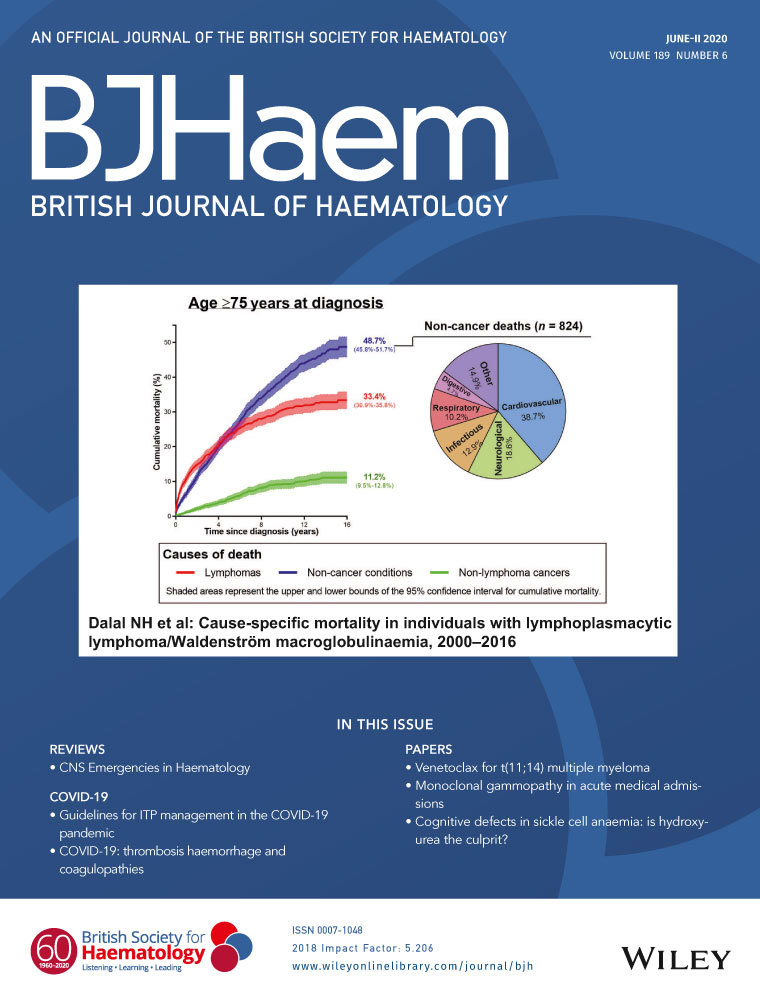Cognitive deficit in sickle cell disease: Is hydroxyurea part of the story?
Regardless of the presence of magnetic resonance imaging-detectable brain injury, individuals with sickle cell disease (SCD) still show evidence of impaired cognitive function, such as scoring lower than the normative mean of unaffected siblings or healthy non-sibling controls in all domains (Prussien et al, 2019). Specifically, individuals with SCD generally fare worse in full-scale intelligence quotient (FSIQ), verbal reasoning, perceptual reasoning, executive function and processing speed (Vichinsky et al, 2010; Hijmans et al., 2011; Downes et al., 2019). The trend of cognitive deficit is progressive from infancy (pre-school) to school age (Prussien et al., 2019) and adulthood with life-long consequences (Sanger et al., 2016).
Neurological injuries, such as silent cerebral infarcts (SCI) and strokes, which are uncommonly seen in healthy children and adolescents, have been reported in up to 50% of individuals with SCD (Ohene-Frempong et al., 1998; Kassim et al., 2016). The association between neurological injuries and cognitive decline is well established, and the severity of cognitive deficit is higher in strokes than in SCI (Prussien et al., 2019). More worrisome is the negative implication of the cognitive abnormalities on educational attainment, academic achievement, skills, employability, financial stability and even adherence to treatment (Schatz et al., 2001; Sanger et al., 2016). All of these combined or individually can further compound the cognitive deficit and affect the quality of life of these individuals (King et al., 2008; Vichinsky et al., 2010; King et al., 2014; Yarboi et al., 2017; Yarboi et al., 2019). The poorly understood mechanism associated with development of cognitive impairment in ‘neurologically intact’ individuals with SCD, as well as the socioeconomic and thus public health implication of having cognitive impairment, increases the urgency to identify and/or develop new therapeutic and preventative strategies for SCD-related cognitive deficit. Additionally, there is accumulating evidence of a potential neuroprotective effect from the use of hydroxyurea (HU) and this is demonstrated by the TWiTCH [Transcranial Doppler (TCD) With Transfusion Changing to Hydroxyurea] (Ware et al., 2015) and SPIN (Stroke Prevention in Nigeria) trials (Galadanci et al., 2017).
In their recently published study, Partanen et al. (Partanen et al., 2020) tested the hypothesis that HU treatment (exposure) could have a neuroprotective effect and potentially be associated with better cognitive outcome amongst adolescents with SCD. To test this hypothesis, they performed a secondary data analysis of the cognitive, clinical, haematological, and sociodemographic data of children (now adults/adolescents) enrolled in a longitudinal cohort of sickle cell disease called Sickle Cell Clinical Research and Intervention Program (SCCRIP). Comparison was made between individuals who were exposed to HU and those who were not exposed to HU. Overall, their results suggest that HU might potentially be beneficial in improving cognitive outcome or at least performance on cognitive testing. It also showed that the observed cognitive benefit might be related to improvements in clinical (such as reduced frequency of vaso-occlusive crises and hospitalisation) and haematological (such as increase in haemoglobin F and decrease in white blood cell counts) parameters. The overall findings and thus conclusions from this study are in concert with a much earlier study in a much smaller sample of children with SCD (Puffer et al., 2007). In their study, Puffer et al. demonstrated that children with SCD who were on treatment with HU fared better on cognitive evaluation, in verbal reasoning and overall cognitive function (FSIQ) than those with SCD but who were not on treatment with HU (Puffer et al., 2007).
Both of these studies offer potentially new evidence to warrant considering HU in the prevention or treatment of SCD-related cognitive impairment. However, both studies have the obvious limitations of a small sample size as could be seen from the small size of the HU-treated group in the HbSC/HbSβ+ (n = 12) and the no-HU-treated groups in the HbSS/HbSβ0 (n = 8), and also the fact that there were no unaffected siblings and/or non-sibling controls included in the study. Taking a deep dive into the data presented, it is not clear whether the benefit observed was more related to improvement in the sickle cell phenotype or due to other as yet unidentified mechanism. This point is important given the fact that the observed differential benefit from HU treatment seems to be marginal and indeed disappears on multiple-testing correction in the HbSC/HbSβ+ group. In addition, it is difficult to compare the findings from this study with the one by Puffer et al. This is because of the differences in cognitive measures and instruments used, as well as the differences in approach to adjustment for covariates or lack of adjustment for covariates. Notwithstanding these limitations and others, including the fact that it is not clear what the mechanism of the observed cognitive benefit of HU treatment might is; this study and the one before it, represents a step in the right direction of getting at the issue of addressing cognitive deficit among individuals with SCD. Unlike the hemi-zygote state, which a recent study suggests might be protective from cognitive impairment and dementia (Chen et al., 2019), SCD is a significant source of racial disparity in cognitive impairment, and identifying therapeutic approaches for treating and/or preventing this complication represents a global public health imperative. Finally, while it might be a difficult endeavour, future studies on this complication, should strive for uniformity of assessment tools and measures to allow for better comparison between studies, thus allowing for the opportunity for meta-analysis, as well as to understand why a study was negative or positive. Uniformity of analytical approach is also something that we need to strive for, as it also allows for comparison between studies when different assessment tools are used. For instance, presenting results as z-scores, rather than raw scores and using similar covariates for adjustment, as well as using similar analytical approaches, can go a long way in helping us to understand the epidemiology and mechanisms underpinning cognitive deficits amongst patients with SCD.




